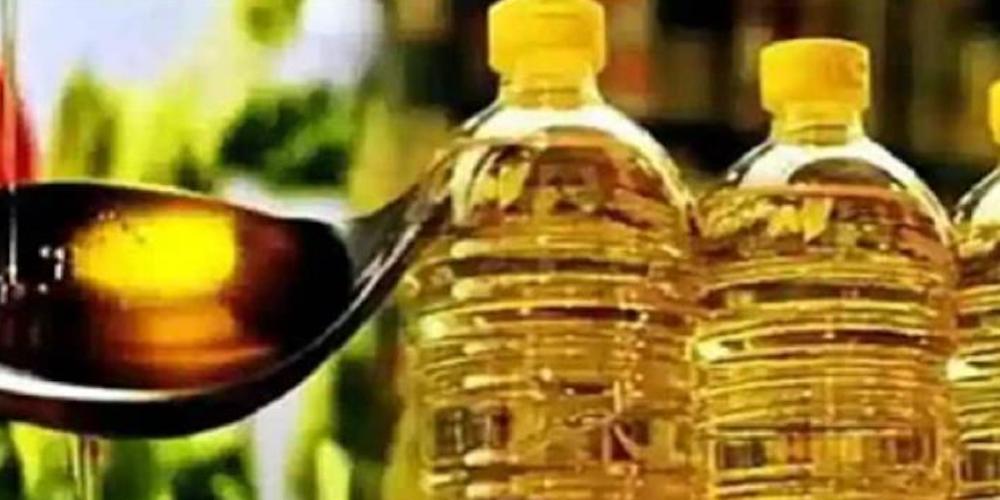Reducing Dependence on Import of Edible Oils

Though a long way to go, the Union Government is implementing a series of schemes towards self-sufficiency in edible oil, which, otherwise, is a big import-commodity for India.
National Food Security Mission- Oilseeds (NFSM-OS) is being implemented by the Government of India from 2018-19 to augment the availability of edible oils and reduce the import burden by increasing the production and productivity of oilseeds (Groundnut, Soybean, Rapeseed & Mustard, Sunflower, Safflower, Sesame, Niger, Linseed and Castor) and area expansion of Oil Palm & Tree Borne Oilseeds (Olive, Mahua, Kokum, Wild Apricot, Neem, Jojoba, Karanja, Simaroba, Tung, Cheura and Jatropha) in the country.
The scheme comprises three sub-missions namely, NFSM-Oilseeds, NFSM-Oil Palm and NFSM-Tree Borne Oilseeds.
Moreover, During the year 2021-22, a Centrally Sponsored Scheme namely, National Mission on Edible Oil-Oil Palm (NMEO-OP) has been launched to promote oil palm cultivation for making the country “Atmanirbhar” ( self-reliant) in edible oils with special focus on North Eastern States and Andaman & Nicobar by increasing area of Oil Palm from 3.70 lakh hectares to 10.00 lakh hectares in 2025-26. This scheme is being implemented in 15 States/UTs during 2022-23.
Under National Food Security Mission- Oilseeds (NFSM-OS), Government of India has also been implementing some special programmes, namely Special Programme on Rapeseed & Mustard for distribution of latest high yielding varieties seeds, Distribution of Seed Mini kits of hybrid Mustard seeds, Rapid Soybean Seed Multiplication Plan (3S1Y) and a Special Project to increase area and production of Sunflower cultivation in the country, through hybrid seed production and demonstration for three years from 2022-23 to 2024-25.
In addition, the Government has also approved an Annual Action Plan for area expansion of Sunflower in Paddy Fallows during 2022-23.
The National Food Security Mission (NFSM)-Oilseeds is being implemented by Government of India from the year 2017-18 in 28 States/UTs, including Gujarat and assistance is being provided in all 33 districts of Gujarat.
However, despite the government’s effort to decrease the edible oil dependency on the world, India will still have to import 72 lakh tonnes of edible oil at the value of ₹70,000 crore in 2030-31, which would be 23 per cent of the total requirement of 300 lakh tonnes edible oils, according to reports.
The data from the Oilseeds Division of the Department of Agriculture and Farmers Welfare show import dependency will decrease to 23 per cent in 2030-31 from 52 per cent (2021-22), but India will still need edible oil from other countries.
The outcome indicator presented by the Oilseeds Division shows the oilseeds area in the country will increase from 287.6 lakh hectares (2021-22) to 338.1 lakh hectares in 2030-31. The oilseeds production will also increase from 385 lakh tonnes in 2021-22 to 602.2 lakh tonnes in 2030-31.
But at the same time, the edible oil requirement in the country will go up from 267.1 lakh tonnes in 2021-22 to 300 lakh tonnes in 2030-31. The production of edible oil, however, will go up from 126.4 lakh tonnes to 228 lakh tonnes during the same period, leaving a gap of 72 lakh tonnes.
It may be noted that Palm oil (crude + refined) constitutes about 62 per cent of the total edible oils imported, and is mainly sourced from Indonesia and Malaysia, while soyabean oil (22 per cent of total imports) is imported from Argentina and Brazil.
Sunflower oil (15 percent of total imports) is imported mainly from Ukraine and Russia. International prices of edible oils are under pressure due to the shortfall in global production and an increase in export tax/levies by the exporting countries. The ongoing war in Ukraine is also a principal factor in this regard.
Incidentally, during the 1980s and 1990s, per capita consumption of edible oils was at 6-7 kg per person per year. India was more or less self-sufficient to cater to that need. But, after the 2000s, there was a boom in edible oil consumption throughout the country. The per capita consumption which was 7.3 kg/year in 1994-95 increased to 18.3 kg/year in 2014-15.
This led to an increase in demand. However, the production of oilseeds in the country could not keep pace with the increased demand.
Interestingly, the Indian Council for Medical Research (ICMR) recommends 30g per person per day of edible oils — that is 12 kg per person per year.
In India, soybean contributes the highest towards oilseeds production while rapeseed and mustard produce the highest edible oil due to high oil content (40 per cent). Palm oil is the most consumed oil but 96 per cent of this is imported. Soybean, mustard, and sunflower are other major edible oils consumed in the country.
It is to be noted that in a bid to control the continuous rise in cooking oil prices — since government had earlier cut the basic duty on crude palm oil, crude soyabean oil and crude sunflower oil from 2.5 per cent to nil — the agri-cess on these oils has been brought to 5 per cent.



